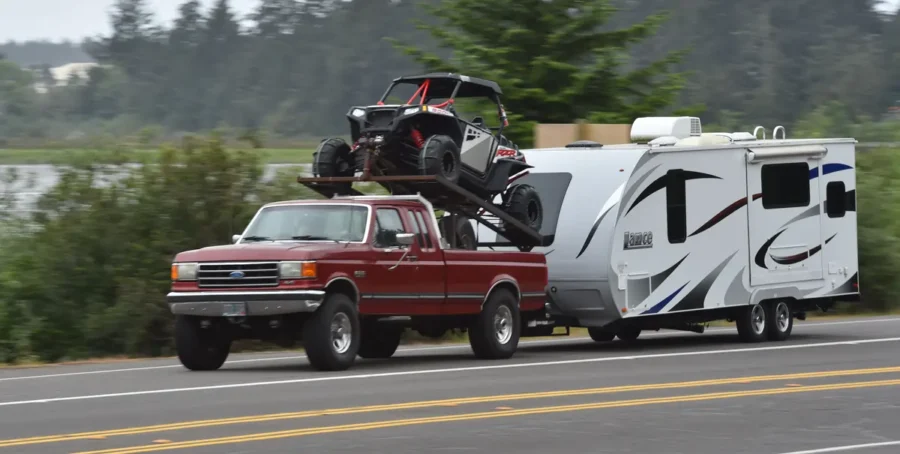
RVers behind the wheel of heavily loaded pickups can benefit from installing air-helper springs
Those who enjoy the RV lifestyle, be it via a 5th wheel, towing a travel trailer, or heading out in a pickup with a camper in the bed, probably have noticed the extra weight of their home-on-wheels can present some challenges when it comes to maintaining a smooth, comfortable ride. Many find that air bag suspension kits work well for them.
Smaller pickups, cars, and SUVs are designed primarily for commuting. So when you slip a trailer on the receiver hitch or put a heavy load in the bed, the rear springs of the vehicle compress under the added load.
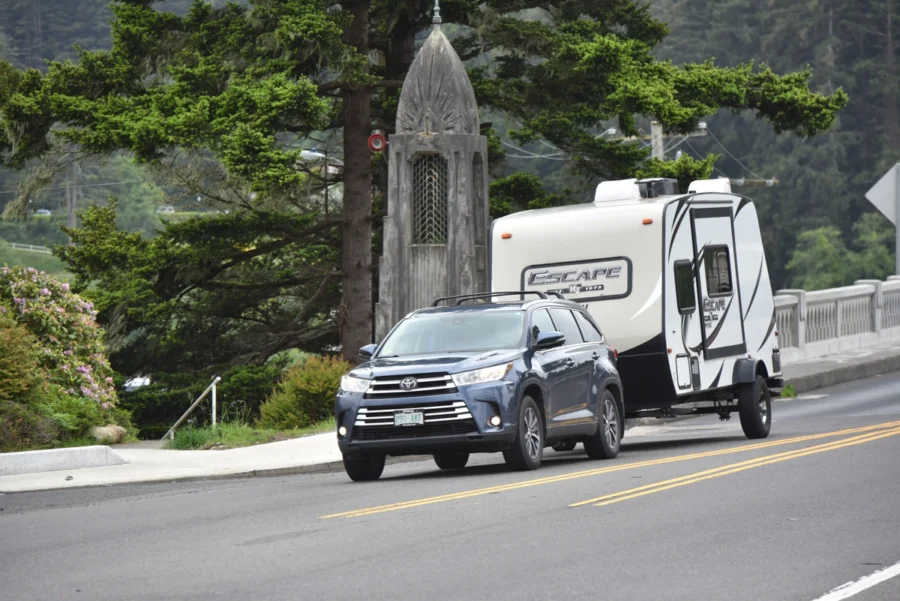
The heavier the load, the more the rear end drops or squats. The same applies to motorhomes, especially when towing a trailer. Adding an air bag suspension upgrade to the rear of an overloaded vehicle can lift and level its tail-low stance.
Air Bags Compliment Weight-Distribution Hitches
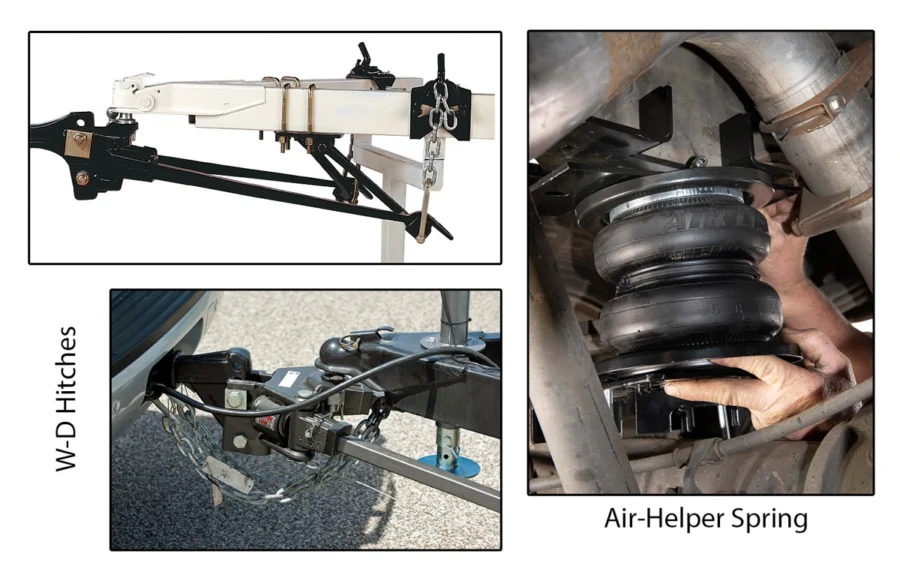
One distinction we must make here when it comes to towing a travel trailer: Air-helper springs (aka air bags) are not a substitute for using a weight-distribution (WD) hitch. A WD hitch “distributes” the load the trailer’s tongue places on the vehicle’s rear axle more evenly between the front/rear of the vehicle and the trailer.
A properly adjusted WD hitch enhances steering, braking, and overall handling of the entire tow package. A tow vehicle with the proper WD setup doesn’t need air bags. But air bags used with a WD hitch is a nice setup.
“A weight-distribution hitch alone can provide the same benefits as air bags while towing, but the same is not true for air bags without a weight distribution hitch,” says Equal-i-zer engineers. “Airbags cannot distribute the weight from the rear axle, so a weight distribution hitch is recommended for a safer journey, even with an airbag system.”
If your tow vehicle is already equipped with OEM self-adjusting air bags, read the owner’s manual very carefully on how to use them with a W-D hitch.
Air Bags Do Not Increase Payload Capacity

Another point is that air-helper springs do not increase the vehicle’s load-carrying capacity. They only raise the vehicle’s rear and do not take any of the load off the rear axle.
You can easily adjust air bags to stiffen or soften the ride depending on how much you inflate them. You can also install them on a WD-equipped vehicle to fine-tune the ride and handling for smooth towing.
How Air Bags Function
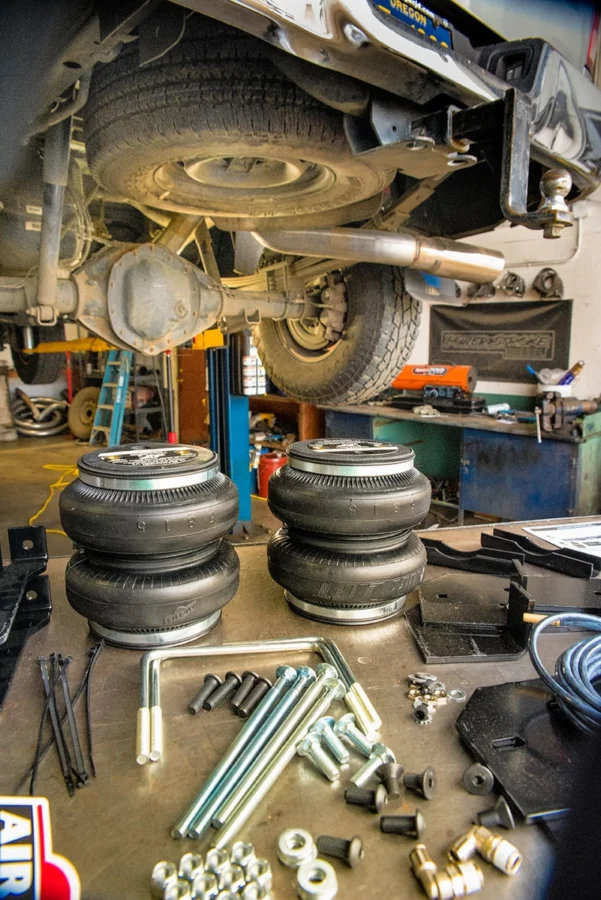
Air-helper-spring kits, like those from AirLift, Hellwig, and Firestone Industrial Products, provide load support through the use of air pressure inside rubber bladders. You can install air bags inside coil springs or between the rear axle and frame.
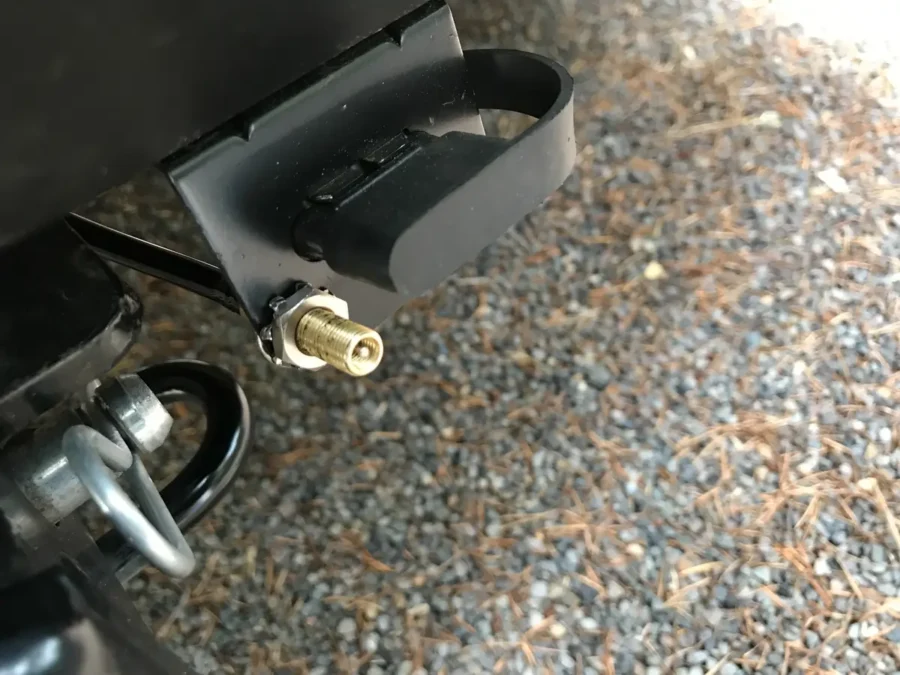
Regardless of where air-helper springs are located or how you control the air pressure inside them, they all help lift and level the rear of the vehicle. In doing so they help decrease suspension fatigue, increase vehicle stability and reduce bottoming out, which collectively leads to a safer, smoother ride.
It’s also good to note that the minimum air pressure for air bags is 5psi. This keeps the air bags inflated just enough to keep them “in shape” and limit undo chaffing or rubbing against the coil springs or other suspension/mounting parts.
How Much Does It Cost To Have Air Bags Installed
Installing air-helper springs can be done by a DIYer who is comfortable with working on their own vehicle. The typical cost for a shop install can be anywhere from a couple hundred bucks to $2,000. It all depends on the sophistication of the air bag system.
For example, a complete air-helper spring upgrade, including parts and installation for manually-inflated air bags that go inside a smaller vehicle’s rear coil springs may cost as little as $300.
At the high end of the price spectrum is a turn-key system on heavy-duty pickups (and motorhomes) that includes the air compressor and state-of-the-art wireless technology to control the air bags’ inflation from inside or outside the vehicle.
Because of the wide range in price, it pays to call both RV repair centers and 4WD/pickup specialty shops to get quotes. Shop labor rates vary considerably, as do markups on the parts. Make sure you are getting prices on apples-to-apples installations using the same brand of air-helper springs and air compressor kits.
But before you do anything, check out how much your vehicle can haul or tow and what you need to “properly equip” it with to do so. If all is within the specs, and you still don’t like the way your vehicle rides and handles, then it may be time to bag it!
Air Helper Spring Sources
- Air Lift Company www.airliftcompany.com
- Firestone Industrial Products www.firestoneip.com
- Hellwig Products www.hellwigproducts.com
- PacBrake www.pacbrake.com
- Rough Country www.roughcountry.com

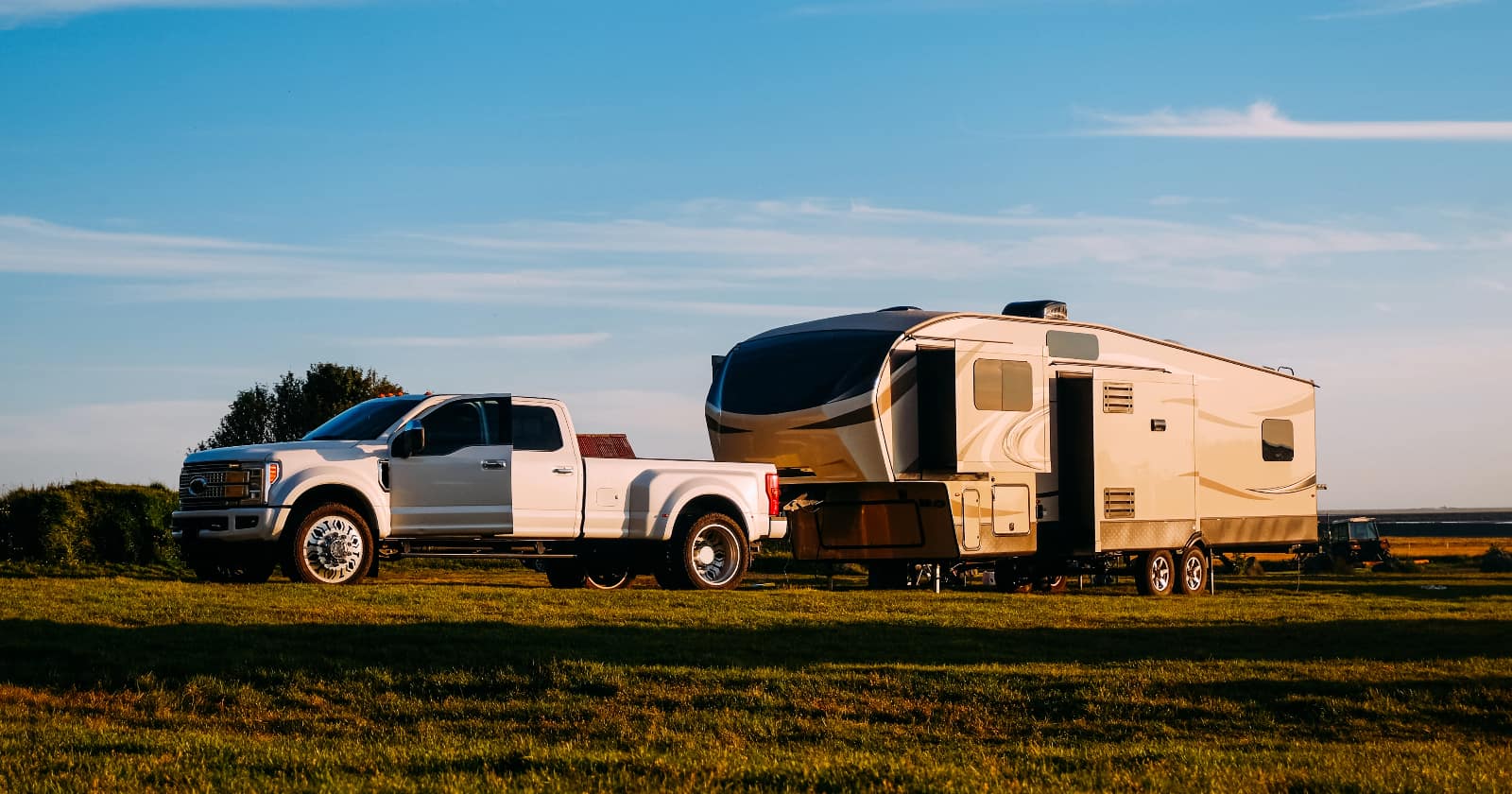



Another reason for the air bags is when towing with a leveled pickup truck. Many like having a level kit which will raise the front end up and allow for larger tires. Unhitched it works fine and front and rear of truck will be level or close.
When hitching up a trailer, the rear on all will sag. Usually the same amount. Unleveled trucks will also sag but will now be close to level and the WDH will help to get the front end back where it needs to be.
When hitching up a trailer on leveled truck, it causes sag as well. However since the rear end was level with the front end pre hitched, the rear will now be lower than front end even though the sag will equal the same amount of sag as an unleveled truck. And even when WDH is dialed in perfectly, rear end will still be lower than front causing nose high as well as headlights to shine into eyes of oncoming traffic. By having a set of air bags, this situation can be lessened by adding air to the bags.
This is what I do. As was mentioned above and I agree, I’m not overloading my rig or using the bags to increase the load capacity over a safe limit, just using them to correct the height of rear end to tow safely.